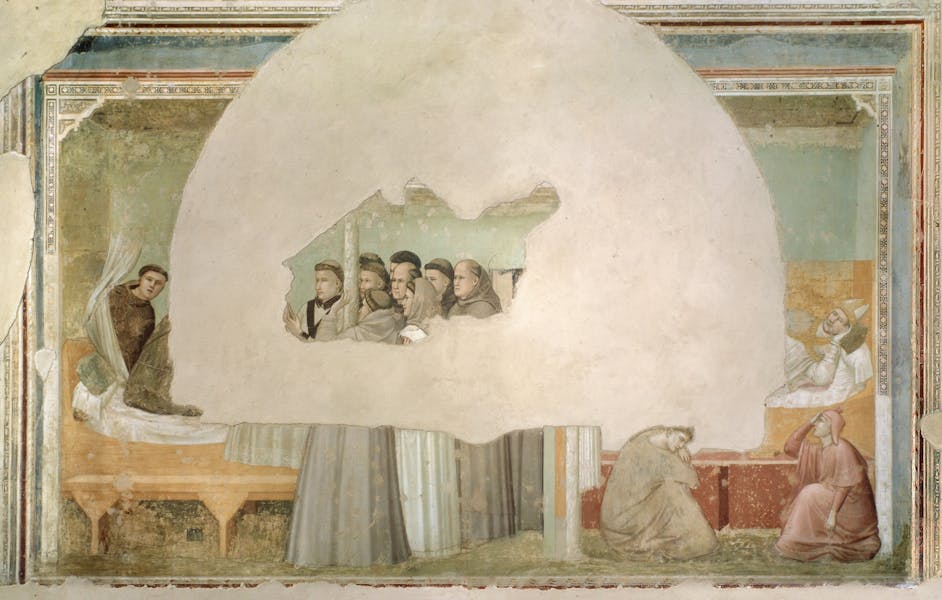
The scenes
Inside the chapel the scenes must be read from left to right and from the top to the bottom: The Renouncing of his father’s worldly goods is followed on the opposite wall by the Confirmation of the Franciscan Rule then on the second level The Apparition at the Arles Chapter to the Trial by Fire and finally at the lower level the Death of St. Francis onto the Apparition to Bishop Guido d’Assisi and Friar Agostino.
St. Francis renounces his father's possessions, and discards his clothing in front of Bishop Guido and Father Bernardone
In this lunette, the building behind Pietro Bernardone and Francesco embraced by the bishop shows an upper loggia rising on a building similar to a fortification, in front of which crowds the population of Assisi. The anger distorting the father's face denotes the study of expressions and gestures, the screams of the two boys, whilst their mother violently grabs their hair to prevent them from throwing stones at Francesco, communicate candour and attention to reality.
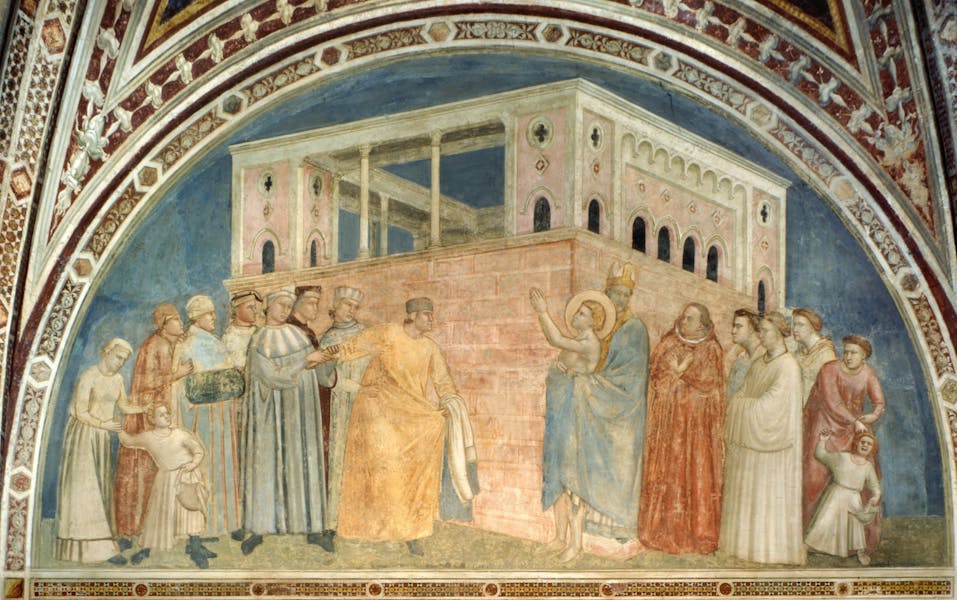
Approval of the Franciscan Rules, scene from the Stories of Saint Francis
Francis is on his knees in front of the Pope followed by his companions, some tonsured others no and all clean shaved. His right hand is over his heart and the left offers the parchment with his “First Rule” to the pontiff. Innocenzo III is seated on a marble throne wearing an ermine robe, flanked by two bishops in white. On their heads they have a mitre. The rich robes of the pope and his acolytes contrast with those of Francis and his followers, whose coats of different shades of grey and brown, indicate that they just used the poor fabrics that were available.
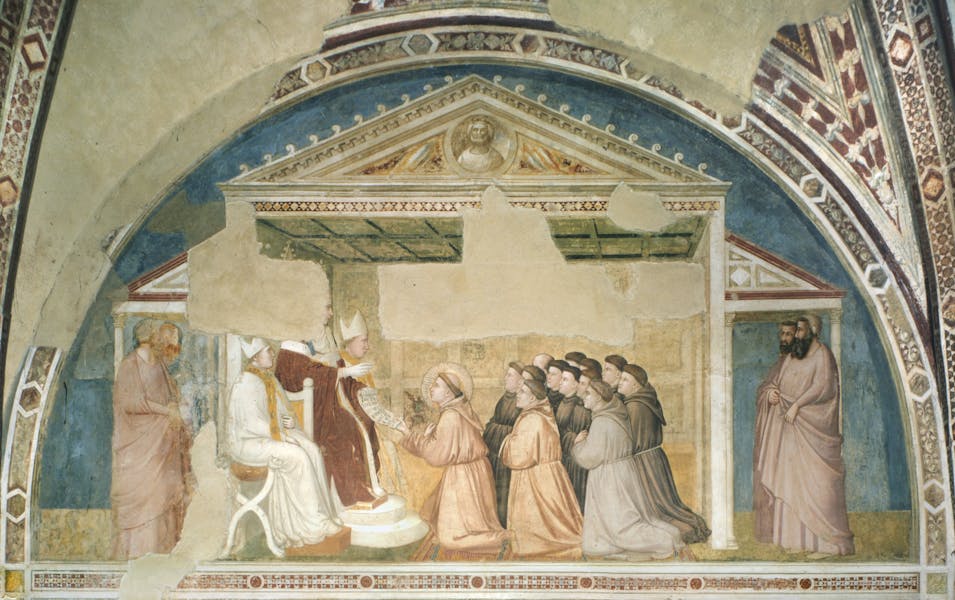
San Francesco preaching in front of the sultan (Trial by fire)
Bonaventure expands on the account of Thomas of Celano's sermon before the sultan by inserting the narration of the "Trial by Fire". The sultan sits on a throne: on the right, St. Francis, standing in a hieratic pose, makes the sign of the cross, ready to face the fire in front of him without fear. On the left, the oriental priests with their attitude and expression show their haste to leave for fear of having to face a fight with Francis, while the sultan's face expresses anger in the face of their cowardice.
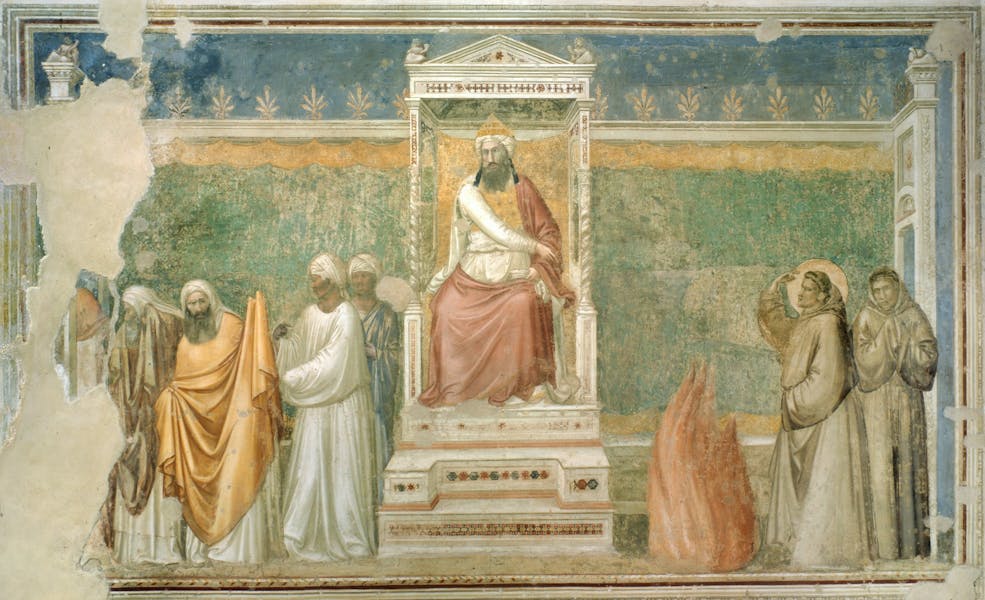
Saint Frances appears at the Chapter of Arles during a sermon of Sant’Antonio da Padova
Francis is standing in the centre of a loggia with his arms raised and his hands open (without the stigmata), while St. Anthony is in a secluded position. The friars are seated and only a few notice the apparition. The saint is clean shaven, while in the oldest images he has a beard down to his waist. This iconographic novelty was intended to attenuate the most disruptive thoughts of Francis by showing him adhering to the rules, because at that time men had to be shaved so as not to appear marginalized.
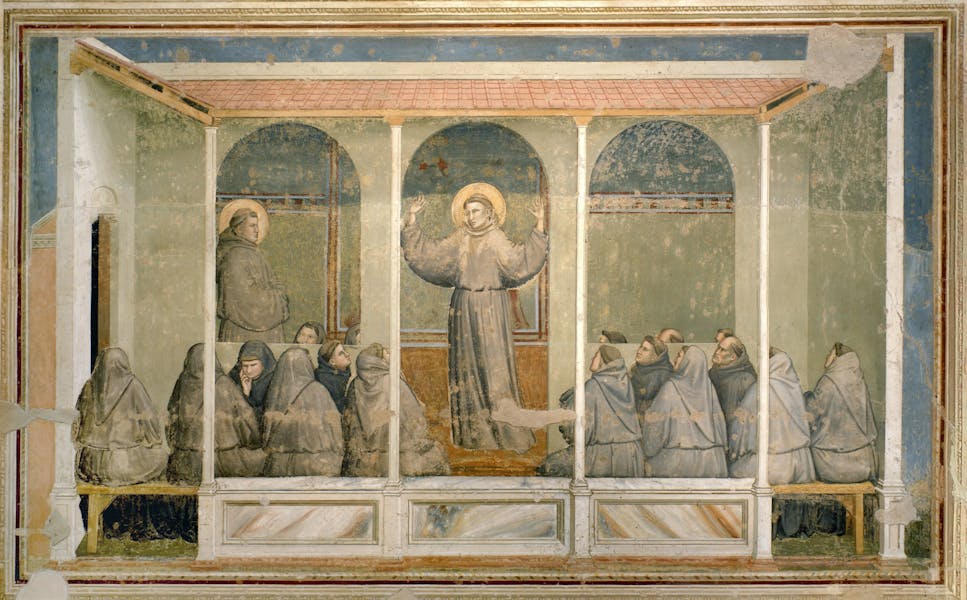
Death of Saint Francis, whose soul is carried to heaven by the angels and the Verification of the Stigmata by Girolamo the unbeliever
In this scene Giotto reunites various moments: death, with the desperate cry of a friar raising his arms, the tenderness with which two friars kiss the stigmatized hand and foot, the wonder of another who notices the angels carrying the soul of the saint to heaven; the physician Jerome kneeling near the bier examining the wound in his side, as incredulous as St. Thomas had been, while the funeral is taking place at the sides, and which friars and lay people take part in.
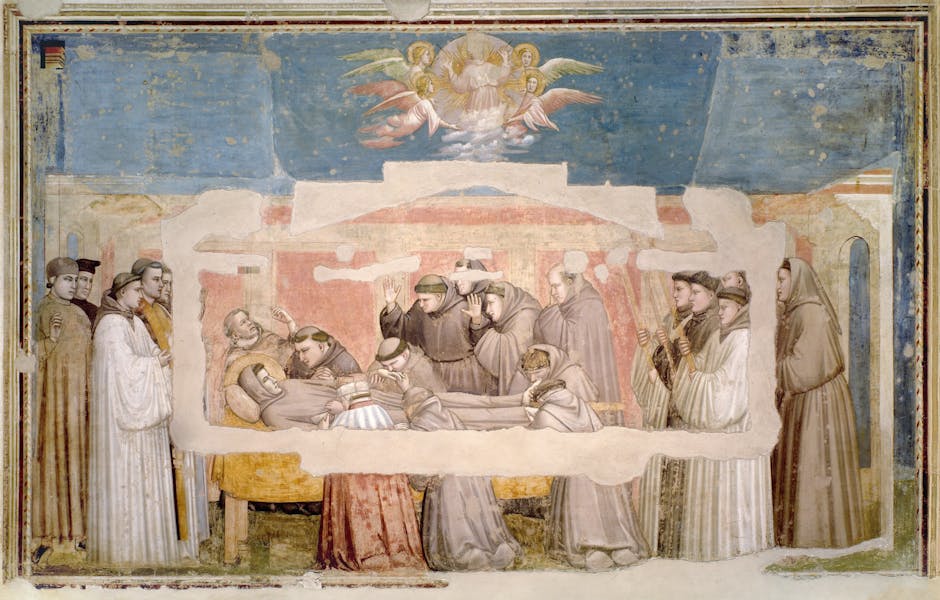
San Francesco appears to friar Agostino and to Bishop Guido di Assisi, scene from the Stories of Saint Francis
This scene merges two episodes which occurred almost simultaneously when Francis died: on the left, Friar Agostino sees the saint’s soul ascending to heaven and informs his fellow friars; on the right, the Bishop of Assisi dreams that Francis is saying to him: “Behold, I leave the world and ascend to heaven”.
Though the fresco is fragmentary, we can still make out the vivid contrast between the friars’ amazement and the listlessness of those sleeping.
